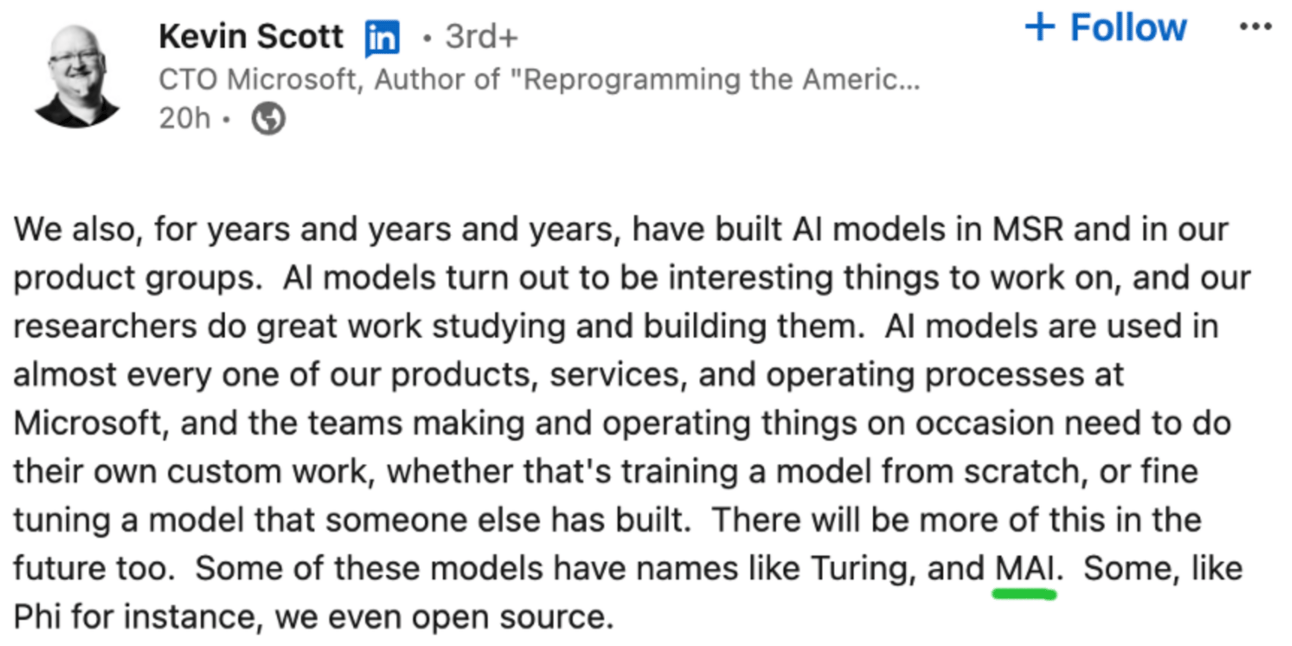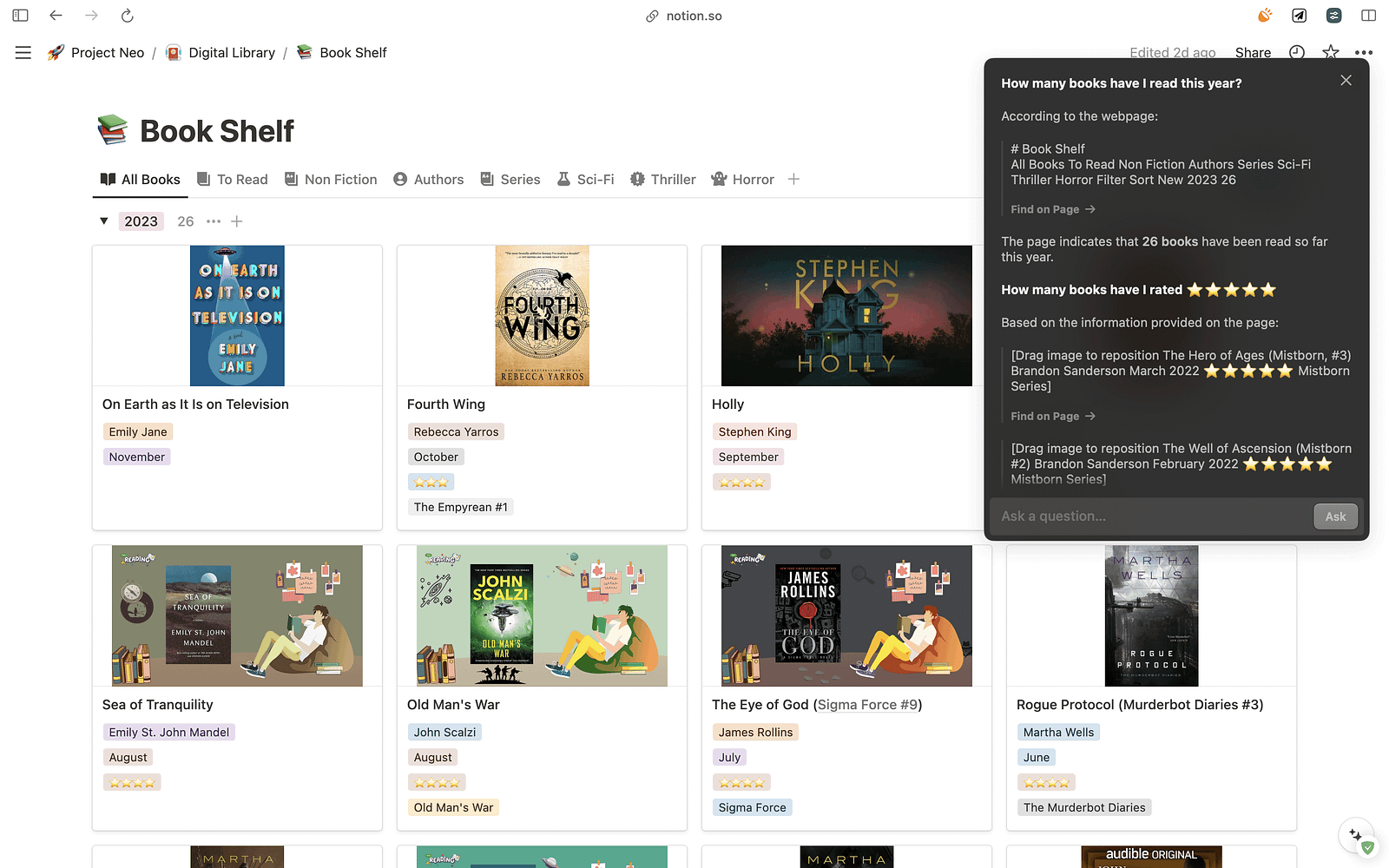- Solan Sync
- Posts
- [3 Business ideas]Microsoft Unveils MAI-1: Pioneering the Future of AI with a 500 Billion Parameter Model
[3 Business ideas]Microsoft Unveils MAI-1: Pioneering the Future of AI with a 500 Billion Parameter Model
Discover how Microsoft’s new MAI-1 large language model could transform AI, enhancing technological independence and competitive dynamics in the industry.

Microsoft’s development of the MAI-1 large language model (LLM) marks a significant step in its strategic evolution in artificial intelligence.
By venturing into building a model with about 500 billion parameters, Microsoft aims to establish a robust in-house capability that rivals the current industry-leading models provided by companies like Google and OpenAI.
Here’s a breakdown of the key aspects and implications of this development:
What’s Going On?
Microsoft is diversifying its AI strategy by developing its own large-scale LLM, named MAI-1. This is a shift from its previous approach, which heavily relied on collaboration with OpenAI for AI technologies.
Why Is This Significant?
Technological Independence: Developing MAI-1 allows Microsoft to reduce its dependency on external AI technologies from companies like OpenAI. This move towards self-reliance can offer more control over the technology and potentially lead to unique innovations under Microsoft’s brand.
Competitive Edge: With MAI-1, Microsoft is not just catching up but aiming to compete at the forefront of the AI industry. This model represents a direct challenge to the dominance of Google and OpenAI in the AI space.
Leadership and Expertise: The project is led by Mustafa Suleyman, a prominent figure in AI, which underscores the company’s commitment to leveraging top talent to drive its AI advancements.
What Are the Potential Challenges?
Resource Intensity: The development of such a large model requires significant computational resources and investment, posing challenges in terms of cost and scalability.
Ethical and Operational Risks: With great power comes great responsibility. Operating an LLM of this scale involves addressing complex ethical considerations and potential biases, along with maintaining compliance with data usage regulations, especially considering the controversial use of OpenAI’s GPT-4 data in training.
Why Should You Care?
This development could reshape the competitive landscape of the AI industry, potentially influencing everything from consumer applications to enterprise solutions. For developers, businesses, and end-users, this could mean more advanced and diverse AI tools and services in the near future.
In essence, Microsoft’s move to build MAI-1 reflects its ambition to be at the cutting edge of AI technology, positioning itself as a leader rather than a follower in the rapidly evolving AI market. This strategic pivot not only highlights the dynamic nature of the tech industry but also signals new chapters in innovation and competition.
Why Now
The decision by Microsoft to develop MAI-1 comes at a pivotal time in the AI industry. Several factors make this a strategic and timely move:
Technological Maturity: AI technology, particularly in the realm of deep learning and neural networks, has matured significantly. There’s a better understanding and availability of the resources needed to develop and train large-scale models.
Market Demand: There is a growing demand for more powerful and efficient AI systems across various industries, from healthcare to finance to entertainment. Companies are seeking AI solutions that can provide deeper insights and automation capabilities.
Competitive Dynamics: The AI field is highly competitive, with key players constantly pushing the boundaries of what’s possible. Staying ahead or at par with competitors like Google and OpenAI is crucial for maintaining relevance and influence in the tech industry.
Data Availability: The explosion of data in recent years provides a fertile ground for training more complex models. Microsoft’s access to vast amounts of data across its services enhances its ability to train and refine MAI-1.
The Opportunity
With MAI-1, Microsoft is not just enhancing its product offerings but also positioning itself to seize multiple strategic opportunities:
In-house AI Solutions: By developing MAI-1, Microsoft can better integrate AI into its existing suite of products, such as Bing, Office, and Azure, offering more sophisticated and seamless user experiences.
New Markets: This move opens up possibilities for Microsoft to venture into new markets that require high-level AI capabilities, such as autonomous vehicles, advanced healthcare diagnostics, and personalized education.
AI as a Service (AIaaS): Microsoft can leverage MAI-1 to offer AI as a service to other businesses, providing them with powerful AI capabilities without the need for their own extensive infrastructure.
Business Idea #1: AI-Enhanced Cybersecurity Solutions
Opportunity: Utilize MAI-1 to develop advanced threat detection and response systems.
Advantages: Improved detection rates of new and emerging threats, faster response times, and reduced false positives.
Disadvantages: High development costs and the need for continuous updates to tackle evolving security threats.
Action Plan: Develop initial prototypes, collaborate with cybersecurity experts for validation, and launch a pilot program with select clients.
Business Idea #2: Personalized Learning Platforms
Opportunity: Harness MAI-1 to create highly personalized educational content that adapts to individual learning styles and paces.
Advantages: Enhanced learning outcomes, increased student engagement, and accessibility to quality education.
Disadvantages: Challenges in data privacy, high initial development and maintenance costs.
Action Plan: Partner with educational institutions for data and trial runs, refine AI algorithms based on feedback, and implement a subscription-based model for schools and universities.
Business Idea #3: Predictive Maintenance for Industrial Equipment
Opportunity: Use MAI-1 to predict equipment failures before they happen, optimizing maintenance schedules and reducing downtime in industrial settings.
Advantages: Cost savings on maintenance, extended equipment lifespans, and minimized operational disruptions.
Disadvantages: High setup cost, reliance on continuous data input for accurate predictions.
Action Plan: Develop predictive models, conduct pilot testing in partnership with manufacturing companies, and refine the system based on real-world feedback.
These business ideas demonstrate the versatile potential of Microsoft’s MAI-1 in transforming various industry sectors through tailored AI solutions.
Thank you for reading this article so far, you can also access the FREE Top 100 AI Tools List and the AI-Powered Business Ideas Guides on my FREE newsletter.
What Will You Get?
Access to AI-Powered Business Ideas.
Access our News Letters to get help along your journey.
Access to our Upcoming Premium Tools for free.
If you find this helpful, please consider buying me a cup of coffee.
Yuki is building an AI Prompt Generator Platform
Hey, I’m a Founder of @ai_solan | an AI Prompt Generator Platform | Web3 Enthusiast | Embracing Innovation and…www.buymeacoffee.com
✅ Stop paying subscription. Try Awesome AI Tools & Prompts with the Best Deals
🧰 Find the Best AI Content Creation jobs
⭐️ ChatGPT materials
💡 Bonus
🪄 Notion AI — If you are fan of Notion and solo-entrepreneur, Check this out.
If you’re a fan of notion this new Notion AI feature Q&A will be a total GameChanger for you.
After using notion for 3 years it has practically become my second brain it’s my favorite productivity app.
And I use it for managing almost all aspects of my day but my problem now with having so much stored on ocean is quickly referring back to things.
Let me show you how easy it is to use so you can ask it things like

“What is the status of my partnership” or “How many books have I read this year?” and this is unlike other AI tools because the model truly comprehends your notion workspace.
So if you want to boost your productivity this new year go check out Notion AI and some of the awesome new features Q&A!
Reply